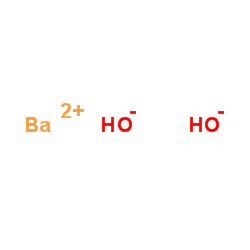| Structure | Name/CAS No. | Articles |
|---|---|---|
 |
barium carbonate
CAS:513-77-9 |
|
 |
Barium hydroxide monohydrate
CAS:22326-55-2 |
|
 |
Barium hydroxide
CAS:17194-00-2 |
|
 |
Barium hydroxide octahydrate
CAS:12230-71-6 |